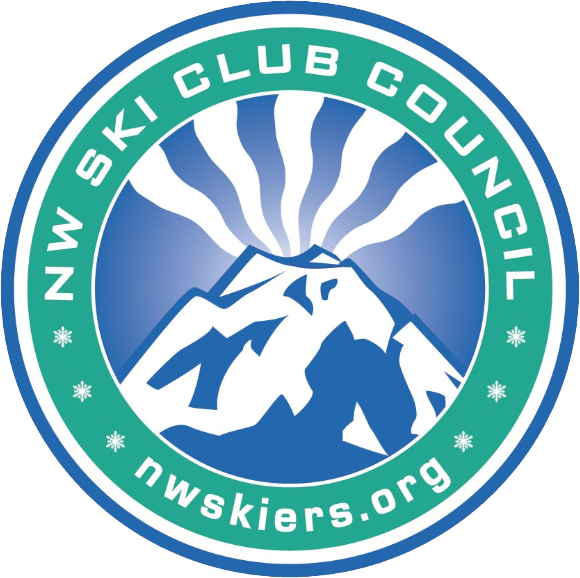So You Think Your Season Is Over? Not So Fast!
/By Tom Arnold, NWSCC Eugene Representative
trustmetom@ comcast.net
So, here we are, first weeks of June. Those once powdery fields of fluff are turning to rivers of sloppy slush; those rhyme-iced trees have become fresh and green and – ugh – spring like. It’s true: the 2021-2022 season is almost over and most of us are stashing our skis and boots and winter equipment at the back of the closet and hauling out the biking gear, the kayaking water wear, and all the other paraphernalia associated with summer activities.
Not so fast!
2022-23 will be upon us before we know it, but will you be ready? Here are a few tips to ensure that your first day of next season will be as memorable as your last one this season.
Let’s start with your skis. If you have more than fifty days on them since their last visit to your preferred ski tech, consider taking them in for a full tune-up/base structure evaluation. I’ve heard good things about Next Adventure in PDX and Sandy. This should include P-texing any base dings, flattening and waxing the base itself, sharpening the edges, cleaning and checking the functionality of the bindings, and – this is important! – checking the torque of the special screws that hold the bindings to the skis. On rare occasions, these special screws can loosen up. The least that can happen is that water can soak into the ski and damage the core. There are worse possibilities; all or part of the binding can rip loose from the ski causing a catastrophic crash. Also, if you have had a fall when your ski should have detached but didn’t, have the shop perform a binding torque test to make certain that your bindings are releasing at the correct DIN setting. You will need to leave your boots with your skis for this test.
Are these fairly new skis with perhaps only a dozen or so days on them? You can prep them yourself so they will rest comfortably over the summer and be ready for your first day next season. If you already have a set up in your garage to wax your skis, you can skip down a few lines. If not, here’s what you do. Find an old bed sheet (a single is plenty) so that whatever wax drips won’t drip on your floor. Get a couple of those plastic saw horses they sell at Home Depot. Buy an iron at Goodwill or St. Vinnie’s. (If you feel flush, you can get a real ski iron, such as a SWIX, but a used one from a thrift store works just as well.) Be sure your thrift store iron has a flat base with no steam holes and adjustable heat settings. Get a chunk of wax at your ski shop. If you tell them you are storing your skis for the summer, they will know which wax you need. While you’re there, pick up a bottle of ski base cleaner. JG Base Cleaner is a good one, but there are probably others that work just as well. Oh, you’ll also need some sort of strap to lock the brakes out of the way so you can work on the bases. (If you try to hold the brakes out of the way while you are ironing on the wax, you may iron your fingers, so be careful!)
First, clean the bases according to the directions on the bottle of base cleaner. Be sure to let them dry completely before you start dripping wax on them. When they are dry, dribble wax on the bases and iron it in. Tognar Ski Tool has a good how-to video on ski waxing. (www.tognar.com/how-to-hot-wax-skis-or-snowboards) Scott goes into far more detail than I do, but you’ll get the idea. You’ll get the feel for how much pressure to apply, how hot the iron should be and how long to keep the iron on the ski. Let the wax set for a while before you stow your skis away. Don’t scrape off the wax; it’s there to keep the bases from drying out. You can scrape before your first day next season.
Next come your boots. You’ve been skiing hard and your feet have been sweating, as you know when you take your socks off at the end of the day. Don’t for a moment imagine that those damp socks have kept your liners dry! They have been absorbing moisture and salt like there’s no tomorrow. You need to take the liners out of your boots and, if you have removable foot beds, take those out of the liners as well. Fill up a bucket with warm, sudsy water and slosh those liners and foot beds for several minutes. You will be amazed at how dirty that water is, especially if you’ve had your boots for a few years and this is their first bath. Once they’re as clean as you can get them, dump the dirty, soapy water and begin rinsing the liners in clean warm water. You may need a few basins of water to be sure that there is no residual soap. It doesn’t hurt to wash the boot shells as well, inside and out. (I like to take my shells and liners into the shower with me, but that may be overkill for the average person.) Finally, let the shells and liners air dry somewhere outside but not in direct sunlight. Don’t be surprised if drying takes several days or even a week or two. The main thing is to be sure they are completely dry before you put them in your closet. Leave them disassembled (liners and foot beds out) until you need them next season.
Lastly let’s deal with your clothing. This is the easiest part. Using fabric-appropriate cleaning agents, launder everything you’ve been wearing all winter. Pay attention to the care labels on the garments and the directions on the bottles. There are different products for different fabrics: silk base layers, fleece, Gore-Tex and Ultrex, down, etc. Nikwax makes a variety of fabric-specific products. Don’t forget to re-waterproof your outer layer, which is likely Gore-Tex or something similar, with a wash-in waterproofing fluid.
Check all your buckles, snaps, buttons, zippers, suspenders, Velcro fastenings, etc. Now is the time to get rid of the duct tape and safety pins. There are several gear repair shops around that can fix just about anything. I have had very nice work done by Gearfix (541 617 0022) and Rugged Thread (541 306 8727) in Bend. Both of these outfits accept mail-in repair work after phone confirmation. I would be happy to mention some in the Portland area, but I don’t know any. For obvious reasons, don’t send any unwashed clothing to a repair shop.
A quick word about equipment repairs. My experience has been that over the years, as companies compete in the marketplace for every last dollar, the quality of both the materials and the workmanship has steadily declined. If you have a favorite jacket or pair of pants that only needs a seam stitched or a zipper replaced, consider repairing it rather than replacing it. Doing so will be easier on your pocketbook as well as the environment and you’ll get a few more years of comfortable use.
Lastly, you should be able to find all the products I mentioned at your favorite ski shop. If you can’t, check out Tognar Toolworks in Ashland, Oregon. www.tognar.com (800 299 9904). Scott and Cat have an extensive selection of support products. They don’t sell skis or boots or poles or helmets. They do sell everything you need to service your skis or snowboard.
Thanks for taking the time to read this and taking the additional time to follow these suggestions. I’ll look for you on the slopes next season.



